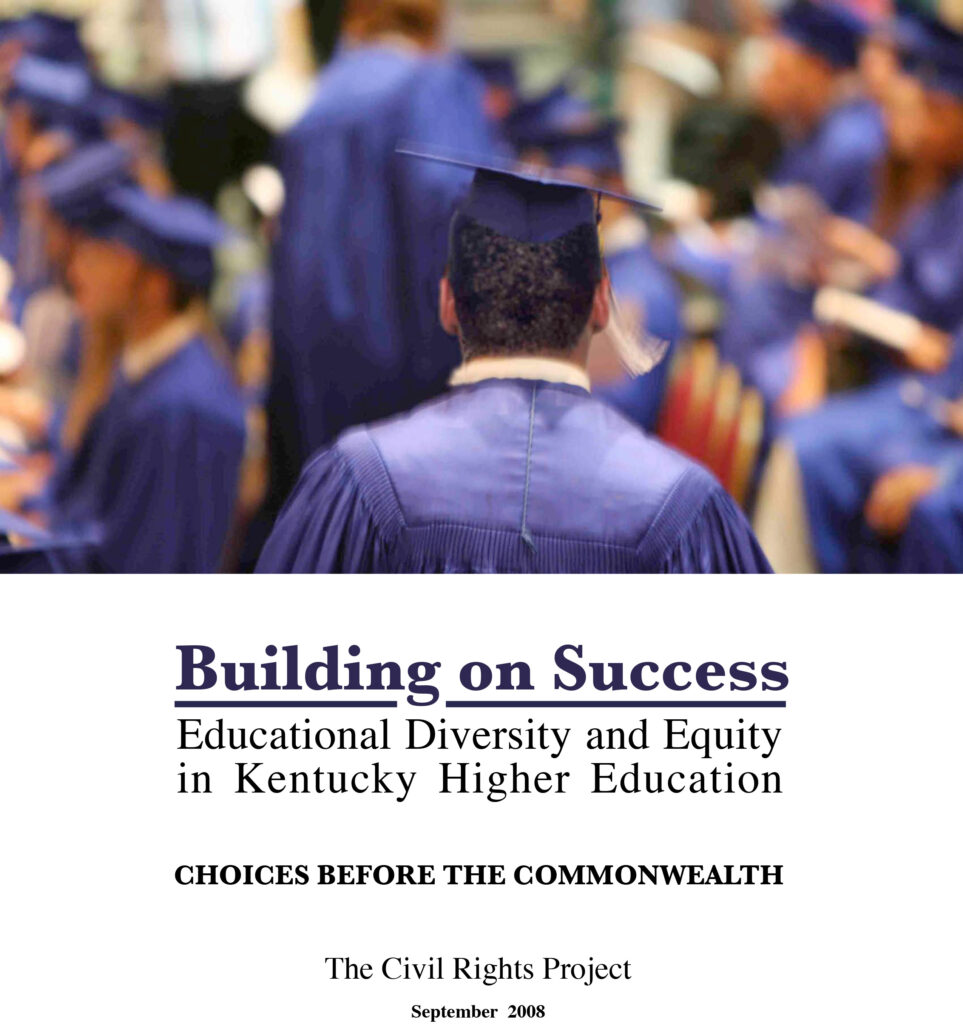Executive Summary
After a third of a century of work to remedy the historic segregation of education in Kentucky’s institutions of higher education, the state has, we believe, created a serious plan for educational opportunity and made major progress in overcoming its history of discrimination. The attainment of these goals has been aided through important reforms implemented in Kentucky’s public schools and higher education system under state laws and by school desegregation, especially in Jefferson County. The state has provided substantial increases in funding for higher education. We find that the enforcement efforts by the Council on Postsecondary Education have been diligent and highly beneficial to the state. We see encouraging trends in the retention and graduation of African American students and in the production of a potentially more diverse future faculty. Most encouragingly, we find that the leaders of the state’s institutions of higher education express strong agreement with the goal of increasing the diversity of their student and faculty communities, and working on creating academic communities where all are welcome and all students have the opportunity to learn from each other in positive and supportive settings. The state has made solid progress and some institutions have produced remarkable change.
In spite of the solid progress, however, the effort is far from finished. The leaders of Kentucky’s higher education systems freely admit that there is much yet to do, particularly in terms of improving acceptance and success for minority students on campus and for recruiting and welcoming nonwhite faculty. One of the fundamental goals of the succession of plans has been to change the image and raise the status of the state’s only historically black college, Kentucky State University. We believe that the remedy cannot be complete until the questions of a viable role and workable plan for KSU are successfully resolved. We conclude that after three decades of work on implementing a new mission, another major effort is needed to assure KSU a viable future.
Kentucky’s goals of doubling the number of its college graduates to secure its economic future, and the goal of the Kentucky plan to produce equal enrollment and graduation levels for black students, are overlapping and interdependent. What civil rights policy requires in terms of social justice, and what the state policy demands in terms of economic competitiveness, require more successful integration of previously excluded groups of students into the higher education system. As we look at the educational pipeline in the state, there are four central problems in reaching the state’s goals. The first is not a matter of higher education policy but shows the urgent need for a K-16 policy, since a state that loses a very large share of its students as high school dropouts cannot have a very high college graduation rate. Policies to rapidly increase the high school graduation level are urgently needed. Second, the state’s campuses are dealing with a very high proportion of students needing remediation before they can take regular college courses. Since college costs are rising and college financial aid typically does not cover extra noncredit course time, this threatens the future completion of students. Thirty years of national experience shows that this cannot be accomplished simply by raising high school requirements. Figuring out how to increase the level of preparation and to speed up needed remediation before the fall of the freshman year are urgently important goals. Third, though there has been a dramatic increase in community college enrollment, there is a very low level of successful transfer for and graduation of community college students from the four-year campuses. Without a pipeline that works between these institutions many students who work hard at a local community college will never realize their dreams and the state will not meet its goals. Fourth, there is a high level of attrition before graduation for university students and a long time between initial enrollment and graduation for those who finish. There are very serious problems in the educational pipeline and solving them will greatly assist in reaching civil rights goals. When pipelines leak there is a disproportionate impact on nonwhite students. Repairing them will help all students but especially those on the margins.
In compliance with the UC Open Access Policy, this report has been made available on eScholarship:
